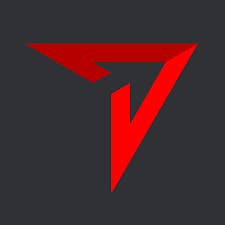Former UAS product lead at Valmont Industries on scaling drone autonomy in industrial inspection
 Jan-Erik Asplund
Jan-Erik Asplund

Background
This interview is with a former Project and Product Manager for Valmont Industries’ (NYSE: VMI) inspection and maintenance services division, now working as a UAS pilot and inspector for another NYSE-listed engineering-services firm. We talked to them about the real-world impact of asset management software and AI in drone-based inspections, the promise and pitfalls of autonomous docked drone systems, and what’s still holding back full adoption of BVLOS (Beyond Visual Line of Sight) operations in industrial and utility contexts.
Questions
- Which two technologies have most changed how you spend your time on a typical workday (last 2‑3 years)?
- Which tech on the horizon feels like the next big disruptor?
- Specifically, which automated detections do you trust, and where does AI still fall short?
- What usually triggers a drone flight in your companies’ workflows—alert, scheduled inspection, or something else?
- For recurring jobs, what cadences are typical?
- Walk me through your first three clicks or checks when you plan a flight, and where do you still lose time?
- Which airframes and sensors are your go‑tos, and when do you need specialty setups?
- We’ve heard battery life is a constraint in many use cases. What percentage of flights need mid‑mission battery swaps, and how does that affect throughput?
- On autonomous dock flights, how much hands‑on time is saved per sortie, do you think? Where does ROI fall short?
- What about trends in adoption of autonomous dock flights?
- If you *could* fly fully BVLOS tomorrow, what would change most for you—launch setup, mid‑mission monitoring, or post‑flight approvals?
- DJI has a huge market share—how common are their platforms in the field? And have you observed any shift to others with the pressure on the drone ecosystem to shift away from DJI?
- Are firms using internal crews more, or is there a shift to outside service providers?
- How do you decide on which sensor or setup to use?
- What’s the biggest bottleneck between landing the drone and getting the data into internal systems for processing and analysis?
- What safety or maintenance improvements have you seen with drones? Any near‑miss stories, like blow-ups or failures prevented?
- What’s one workaround or skill you learned the hard way that now saves an hour?
- Does FAA paperwork eat time? What’s the worst part?
- If you could design one feature for your gear or software stack that you don’t see out there today, what would it be?
- Name a vendor that surprised you, good or bad. What happened?
- What are your quick thoughts on a robotics company called Gecko? Have you seen their devices out in the field? How would their attachable robots compete with or complement aerial drones?
Interview
Which two technologies have most changed how you spend your time on a typical workday (last 2‑3 years)?
Asset management tools like ESRI have significantly sped up flight planning processes. Flight planning apps with 3D modeling and terrain features, such as Drone Deploy or DJI Terra, have also helped reduce setup time and cut down on the need for reshoots, since you can preemptively plan flight routes and angles around actual terrain. Using these tools to plan routes is extremely helpful.
The benefit of using that tech in planning, is that when we get out in the field, we’re able to visualize damage more effectively, especially when looking for emerging or nascent patterns.
Which tech on the horizon feels like the next big disruptor?
Autonomous docked drone systems will definitely be a game‑changer once regulations catch up. Right now, flying beyond visual line of sight requires special FAA waivers—and while you can get them, it makes it impractical to invest in these systems. If you end up having to follow them around or fail to get a waiver then you’re not going to be getting the value out of these systems. I should say that I myself have not experimented with them, it’s just based on my experience with the limitations we face today in the field without autonomous docking.
AI‑powered defect detection is also evolving very quickly, even though it's still not fully reliable.
Specifically, which automated detections do you trust, and where does AI still fall short?
AI works for rust, heat anomalies, and obvious damage—especially, if the lighting is good. It still struggles with what we call “toe cracks” on galvanized steel and in detecting weathering on steel in general. Manual review is still needed in most cases anyway. But net-net, it still probably saves us about 20–30% review time on well‑lit, high‑contrast surfaces, especially when you’re dealing with larger batches of images as we often are.
What usually triggers a drone flight in your companies’ workflows—alert, scheduled inspection, or something else?
Most often it’s a scheduled inspection, but we also launch based on field observations or customer requests, for example—after severe weather events.
For recurring jobs, what cadences are typical?
Typically, quarterly, or it’s outage‑based. Warranty or structural work tends to be annual. Some preventive maintenance inspections can be monthly.
Walk me through your first three clicks or checks when you plan a flight, and where do you still lose time?
First, I check the airspace in Airdata. Then I check the weather, and finally confirm any access restrictions with the customer—locked gates, rooftop structures, swamps, that kind of thing. Weather delays almost always turn out to be the biggest time drain.
Which airframes and sensors are your go‑tos, and when do you need specialty setups?
I use the DJI M30T for most thermal and visual work, and the M300 when I need zoom, LiDAR, or heavier sensor payloads. Skydio is good for tight or GPS-denied spaces, because of its object avoidance. Elios and Voliro get used when we’re in confined or NDT‑related testing [Non-Destructive Testing-related missions].
We’ve heard battery life is a constraint in many use cases. What percentage of flights need mid‑mission battery swaps, and how does that affect throughput?
Probably 80% of flights, especially with the DJI M300 and heavy payloads that I mentioned. Battery swaps only add 5–10 minutes, but that does slow things down when covering a lot of ground.
On autonomous dock flights, how much hands‑on time is saved per sortie, do you think? Where does ROI fall short?
Well, given I have no hands‑on experience with docked flights yet, I’d rather not speculate.
What about trends in adoption of autonomous dock flights?
Some early adopters are trying them for security or repeat site checks, but utilities are holding off until BVLOS gets easier [the FAA is expected to loosen BVLOS rules in January 2026]. There’s interest, but the regulation is holding it back.
If you *could* fly fully BVLOS tomorrow, what would change most for you—launch setup, mid‑mission monitoring, or post‑flight approvals?
Oh it’s launch setup, no question. Being able to stage the drone and fly remotely would cut travel and make it much easier to do more jobs per day. This would be a major shift all around, but especially for remote or rural areas, which you often see in energy or utility work. We often lose 2 to 4 hours just getting to the site.
DJI has a huge market share—how common are their platforms in the field? And have you observed any shift to others with the pressure on the drone ecosystem to shift away from DJI?
Honestly DJI is still everywhere—it’s still probably 90% of what I see. Skydio is picking up for interior work—again because of the object avoidance. That said, I've seen some Freefly, Wingtra, and Percepto too. But DJI still dominates.
Are firms using internal crews more, or is there a shift to outside service providers?
It’s a mix, really. I’d say that while more companies are training internal teams for routine work, external crews are still used for specialty jobs. I’ve had to redo work done by contractors due to poor angles or image quality. So it doesn’t always make sense to outsource this stuff. It just depends on the intensity and sensitivity of the work that needs to be done.
How do you decide on which sensor or setup to use?
It totally depends on the job. LiDAR is what you want for elevation and structure modeling, then RGB for surface‑level detail, and of course thermal for heat issues. I look at data quality, runtime performance, and what the customer actually needs. You have to weigh all that, because it’s not always immediately obvious which sensor is best for each inspection or task. And sometimes you need a mix.
What’s the biggest bottleneck between landing the drone and getting the data into internal systems for processing and analysis?
It’s really just the data cleanup and file naming. If the naming format is off, it creates delays downstream. Also, some clients have security policies—for example they don’t always allow thumb drives or external links. That can stall delivery. You do see a lot of that out there. It’s mainly about matching internal protocols and following a checklist, not hard, but time consuming.
What safety or maintenance improvements have you seen with drones? Any near‑miss stories, like blow-ups or failures prevented?
Well in the first instance, drones are much safer than sending people up cell towers, utility towers, or any high structures. You spot failure points: On one job, we found a cracked arm on a utility pole before a storm hit—that single drone inspection most likely helped avoid a critical failure.
What’s one workaround or skill you learned the hard way that now saves an hour?
Standardized shot lists and angle guides—basically SOPs for the shots you need to take and how you need to position a drone to get the best images for certain types of inspections. It took us a while to get right, but now they cut way down on reshoots and confusion. We saw a clear before and after impact.
Does FAA paperwork eat time? What’s the worst part?
Sometimes, getting a very specific COA [Certificate of Authorization] waiver from the FAA can be slow. But the most common approvals go quickly using LAANC [Low Altitude Authorization and Notification Capability—an FAA program that lets drones automatically access controlled airspace].
We access LAANC through Airdata, which if you’re not familiar is a flight planning app for drone operators. That’s made it fairly straightforward.
If you could design one feature for your gear or software stack that you don’t see out there today, what would it be?
AI that auto‑generates inspection reports based on asset type and what was detected—that would save a lot of time.
Name a vendor that surprised you, good or bad. What happened?
Skydio. Great obstacle avoidance, like I’ve said, but it had software bugs and unexpected malfunctions that made it unreliable in the field. Specifically, we experienced mid‑flight connection losses and inconsistent image capture. All of this became a huge problem in the context of time‑critical inspections.
What are your quick thoughts on a robotics company called Gecko? Have you seen their devices out in the field? How would their attachable robots compete with or complement aerial drones?
I actually worked alongside Gecko during a recent refinery turnaround, so I’ve seen their system up close. From what I understand, they’re using a tethered crawler that magnetically attaches to surfaces and runs phased array ultrasonic testing (UT). That gives them really detailed subsurface data—stuff that’s not currently possible with drones, at least not that I’ve seen.
That said, I wouldn’t really compare Gecko and drones as competing tools—they’re just built for different types of inspections. We’ve been using drones like Voliro and Elios’s for visual, thermal, and even UT wall thickness in certain environments, which is super valuable for speed, safety, and access to tough areas. But drones aren’t doing phased-array, and Gecko isn’t flying up towers or scanning 3D models from a distance.
Each has its strengths: Gecko is great for high-resolution, contact-based NDT on ferrous surfaces.
Drones are ideal for broad coverage, quick visual/thermal assessments, and reaching hard-to-access spots safely.
Really, they complement each other more than compete. It all comes down to the asset type and the inspection objective.
Disclaimers
This transcript is for information purposes only and does not constitute advice of any type or trade recommendation and should not form the basis of any investment decision. Sacra accepts no liability for the transcript or for any errors, omissions or inaccuracies in respect of it. The views of the experts expressed in the transcript are those of the experts and they are not endorsed by, nor do they represent the opinion of Sacra. Sacra reserves all copyright, intellectual property rights in the transcript. Any modification, copying, displaying, distributing, transmitting, publishing, licensing, creating derivative works from, or selling any transcript is strictly prohibited.


